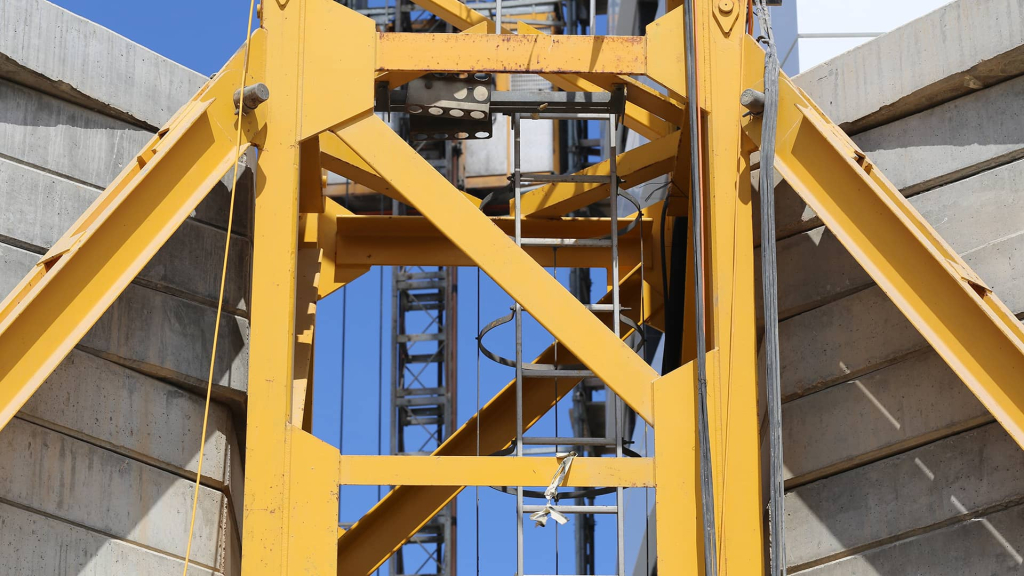Security of payment legislation in Australia
Should Victoria adopt amendments introduced to the Security of Payment legislation in Queensland and NSW, which allow claimants to issue payment claims after termination of the contract?
This note sets out the background to the amendments in NSW and Queensland and considers whether existing default rules in Victoria provide a satisfactory solution to the problem or not. In the writer’s view, the rules in Victoria appear to be deficient and, absent an amendment to the legislation, new agreements should contain wording to address a contractor’s right to claim after termination.
Background
The amendments to the legislation in NSW and Queensland followed concerns expressed in the Review of the Security of Payment Laws issued in May 2018 (Murray Review) that head contractors in the East Coast jurisdictions were able to strategically invoke termination for convenience clauses in construction contracts prior to a ‘reference date’, thereby preventing a claimant from making a payment claim under the legislation. 1
One submission to the Murray Review noted that:
… it is now a common practice for Respondent’s to wait until the second the work is completed, and then terminate the contract before the Claimant can make its final claim. Some respondents are so adept at this practice that they short pay several invoices prior to the Termination, and then terminate the contract leaving the Claimant with months of work owing and no way of making a claim under the Act.2
Those guilty of this practice would have been emboldened by the High Court decision of Southern Han Breakfast Point Pty Ltd (In Liquidation) v Lewence Construction Pty Ltd3 (Southern Han), which held that unless the contract specifically deals with the right to payment claims upon termination, rights to further payment claims are extinguished upon termination and any payment claim issued after termination is invalid.
The vast majority of stakeholders who made submissions to the Murray Review agreed that, following Southern Han, something had to be done to ensure that a ‘reference date’ could accrue following termination of the contract. Recommendation 17 of the Murray Review was that the legislation should be amended to enable a claimant, where a construction contract has been terminated, to make a payment claim for construction work carried out (or related goods and services supplied) up to the date of termination.
The wording of the following amendment to the Queensland Act (now in effect) was proposed as a suitable model: 4
However, if a construction contract is terminated and the contract does not provide for, or purports to prevent, a reference date surviving beyond termination, the final reference date for the contract is the date the contract is terminated.
NSW has now gone further by adopting the Murray Review recommendation to jettison the expression “reference date” altogether 5 and to introduce a freestanding right to serve a payment claim on or from the date of termination.
Why have these sensible amendments not been taken up in Victoria?
One answer may be that it is felt that the Victorian security of payment regime adequately addresses the position by creating a default reference date for a final payment claim. Section 9(2)(d) of the Victorian Act provides that in the case of a final payment claim, a reference date arises on the date the construction work was last carried out or when related goods and services were last supplied. 6 The effect is that, if a contract is terminated, a final payment claim can be issued on or after this date.
However, Section 9(2)(d) is not engaged if the contract is one that expressly provides for a right to a final payment claim. It would be a rare contract that is entirely silent on the right to a final payment claim; most contain detailed provisions dealing with such a right at various points in time, e.g. upon expiry of the defects liability period. Section 9(2)(d) is therefore of limited utility for most contractors, as was demonstrated in the case of Vanguard Development Group Pty ltd v Promax Building Developments Pty Ltd 7 (Vanguard).
Vanguard
The salient facts in Vanguard were as follows:
- The contract between the builder (Promax) and the owner (Vanguard) contained a familiar code for the right to issue a final payment claim at the later of:
- Expiry of all defects liability periods;
- Rectification of all defects and finalisation of all incomplete work; and
- Completion of the works in accordance with the contract.
(for convenience, “the DLP”)
- The contract also contained the following Special Condition:
Reference Date
In [sic] the extent that the Building and Construction Industry Security of Payment Act 2002 (‘the Act’) is applicable to this contract, and notwithstanding any other term of this contract and/or its termination, the ‘reference date’ for the purposes of a final claim for payment, pursuant to section 9(2) of the Act, is the date the Contractor last undertook any works on the site. - Promax issued a payment claim on 15 December 2017, which was the subject of an adjudication application on 22 December 2017. As a result of Vanguard’s failure to pay the adjudicated amount, Promax issued a notice to suspend on 27 February 2018. The contract was then terminated on the same day after Promax served a notice to terminate, which Vanguard treated as a repudiated of the contract entitling it to terminate.
- Promax served its final payment claim on 8 March 2018.
Kennedy J accepted that, in principle, section 9(2)(d)(iii) of the Act will permit a final payment after termination. 8 However, Her Honour held that the section was not engaged because, by reason of the detailed code for making final payment claims, the contract was not one in which there was “no express provision with respect to the final payment claim”. As the DLP had not expired, no right had accrued for the issue of a final payment claim.
The Special Condition, which the parties may have thought would comfortably deal with this issue, failed to save Promax as the court held that the detailed code in Clause 11.1 takes priority over the Special Condition. Her Honour held that unless the detailed code in Clause 11.1 takes priority, the code would be redundant as Promax could wrongfully terminate and make a final payment claim, including a claim for its retention. Her Honour held that the Special Condition created no freestanding right to a reference date; all it purports to do is supply a reference date to the extent that there was a right to a final payment claim and as no right to claim accrued, the Special Condition did not apply.
Lastly, Her Honour rejected Promax’s attempt to characterise its final payment claim after termination as a progress claim, so as to avoid the requirement that final payment claims could only be brought after expiry of the DLP. The court looked at the substance of the claim and found it to be a final payment claim. 9
Discussion
With respect, the court’s conclusion that the contract did not provide a freestanding right to make a payment claim after termination is difficult to reconcile with the wording of the Special Condition. The words “notwithstanding any other term of this contract and/or its termination” in the clause make it palpably clear that a right to claim accrues on termination, whatever else is in the agreement.
The court’s view that these words were inserted in the Special Condition “out of an abundance of caution to ensure that a reference date would be retained even if there was a termination post a contractual claim for final payment”, seems to be questionable. There is nothing in the Special Condition to suggest that it only applies in such narrow window of time. The prospect of a contractor requiring a reference date after DLP and after the final payment claim is remote; the contract would effectively be at an end and if Promax had already made a post DLP final payment claim, why would it need to make a further final payment claim if termination suddenly ensued?
In addition, the court’s view that the detailed code in Clause 11.1 would be redundant (if Promax could have issued a payment claim after termination but before expiry of the DLP) seems questionable. The detailed code in Clause 11.1 would have still applied if there is no termination or if the termination is held to be invalid and the other party elects to keep the contract on foot. On the other hand, the court’s very narrow construction of the Special Condition would render the clause virtually redundant.
Notwithstanding the above criticisms, the Vanguard decision demonstrates that absent a clear contractual right to make a payment claim after termination, the legislation in Victoria, and in particular section 9(2)(d)(iii) of the Act, is unlikely to assist many terminated contractors who wish to issue a final payment claim; the section is only enlivened if the contract is entirely silent on the right to make a final payment claim.
Victoria should therefore adopt the amendments proposed in either Queensland or NSW. Ideally, of course, the uniform legislation proposed in the Murray Review should be implemented sooner rather than later. This is perhaps becoming more pressing because as the East Coast jurisdictions adopt Murray Review recommendations in a piecemeal fashion, they appear to be drifting further apart.
How does this affect you?
Until uniformity is achieved or amendments similar to those in Queensland or NSW are implemented in Victoria, contractors in Victoria need to consider the following:
- If you are negotiating a contract, include clear wording to allow for a right to a final payment claim on termination.
- If the ink is already dry, consider whether the claim should be framed an ordinary progress claim rather than a final payment claim.
- Otherwise, contractors should be wary of the tactic deployed by principals of terminating so as to oust the application of the legislation. Avoid repudiatory conduct that may play into the hands of a principal.
For principals, the option of terminating to avoid the accrual of further payment claims remains available, unless the contract is silent on the right to issue a final payment claim. There should be a clear right to terminate. A termination that is ‘engineered’ by a principal is unlikely to be regarded sympathetically by an adjudicator or the court.
Footnotes
- Murray Review, p131. The report can be found at https://www.jobs.gov.au/review-security-payment-laws
- Ibid. 129
- (2016) 340 ALR 193
- Section 67(2) of the Building Industry Fairness (Security of Payment) Act 2018 (Qld)
- Recommendation 14 of the Murray Review. Whether this reduces the jurisdictional arguments that have ensued concerning “reference dates” remains to be seen.
- Section 9(2)(d)(iii) of the Building and Construction Industry Security of Payment Act 2002 (Vic)
- [2018] VSC 386
- Kennedy J noted the obiter remarks to this effect by Vickery J in Gantley Pty Ltd v Phoenix International Group Pty Ltd [2010] VSC 106 at [183]
- Digby J rejected a similar argument in Cat Protection Society v Arvio [2018] VSC 757.












